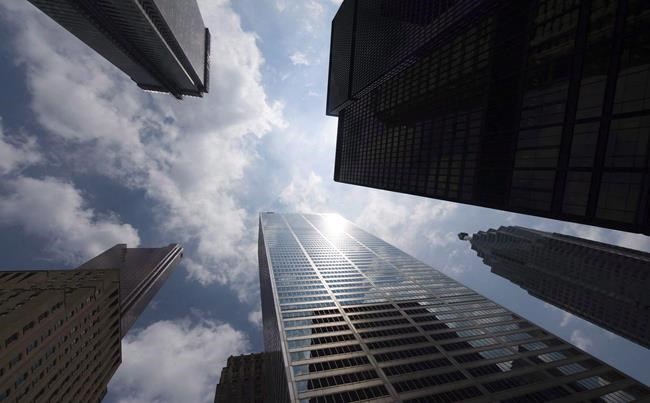TORONTO — Canadian banks had a strong second quarter, where they beat expectations and began to wind down reserves built up to protect themselves from customers defaulting on loans.
Their performance was the product of a cautious approach they applied to the COVID-19 pandemic and the diversification that executives said created stability across all arms of their businesses.
Now, all eyes are on how banks will create growth and use that money, analysts say.
"We're sitting here, taking a look and saying, "well, if we're not worried about credit and we're not worried about the balance sheet, the next step is where's growth going to come from?" said John Aiken, the head of research in Canada for Barclays.
His remarks came as the country's major banks — Royal Bank of Canada, TD Bank Group, Bank of Nova Scotia, Bank of Montreal, Canadian Imperial Bank of Commerce and National Bank — capped a week of quarterly results on Tuesday.
Government relief has kept their customers afloat during the COVID-19 pandemic, the banks said, diminishing the need for the massive reserves they accumulated through most of 2020 to cover anticipated losses.
The Bank of Canada has said Canadians saved about $180 billion in 2020, or roughly $5,800 per person.
With so much money saved, banks are now feeling hopeful about the second half of 2021, when sales at newly open retailers and restaurants are expected to spur consumer spending.
"It does look like the bank executives are very positive on the outlook for the economy," said Aiken. "However, it's not translating to growth at this stage of the game, and that's where investors are left to try to figure out where the growth is going to come from."
One area ripe for growth is commercial loans, he says, because businesses will need to reinvest in themselves, their inventory and sales if the economy improves as expected.
Aiken will also keep his eye on credit card balances, which have remained low while spending dropped while many Canadians were living under stay-at-home orders.
That meant less access to favourite pastimes, including tourism and entertainment, and fewer opportunities to spend, but Aiken thinks balances could grow with the reopening.
"Everything is contingent on how the economy reopens, and how consumers react to that," he said.
"Considering this is something that nobody has lived through before it's very difficult to try to model out or guess ... how strong or how weak the growth is going to be."
Colin Cieszynski, the chief market strategist at SIA Wealth Management Inc., said anyone curious about what trends might play out at Canadian banks should look to the U.S., where reopening efforts are already underway.
American banks reported their rapid reductions in loan loss provisions, a little more than a month before Canada's banks did, he said.
Now U.S. banks are facing questions about dividends and buybacks, which they're eager to act on but temporarily prevented from by restrictions the Federal Reserve put in place at the onset of the pandemic.
The Fed is conducting a stress test for banks at the end of June. If they pass, Cieszynski believes they may be allowed to resume dividends and buybacks in the summer.
"If we're tracking in Canada a few months behind that, then ... we might not see it here till the fall," he said.
In Canada, the Office of the Superintendent of Financial Institutions banned executive compensation hikes and dividend increases and common share buybacks during the health crisis to keep banks and insurers stable.
OSFI has said it won't consider lifting any of the restrictions until COVID-19 lockdowns have subsided, but RBC's chief executive David McKay said on his company's earnings call that he expects to use accelerated buybacks to return capital to shareholders.
Even if OSFI doesn't ease up soon, Aiken said they have another option: acquisitions.
"The greatest gossiping that goes on with banks is what are they going to buy?" he said. "It's always a discussion, but even more so now, when it does look like the banks have money in their pockets."
TD chief executive Bharat Masrani, for example, told analysts last week that his bank "won't be shy" to make deals but didn't offer any hints about where it's looking for acquisitions.
"There's a lot of things they could do when they free up the reserves. They could do lending. They could do acquisitions and they could go back to increasing their dividends and share buybacks," he said.
"It's hard to say what they'll decide to do with it."
This report by The Canadian Press was first published June 1, 2021.
Companies in this story: (TSX:BNS, TSX:TD, TSX:RY, TSX:CM, TSX:BMO, TSX:NA)
Tara Deschamps, The Canadian Press



